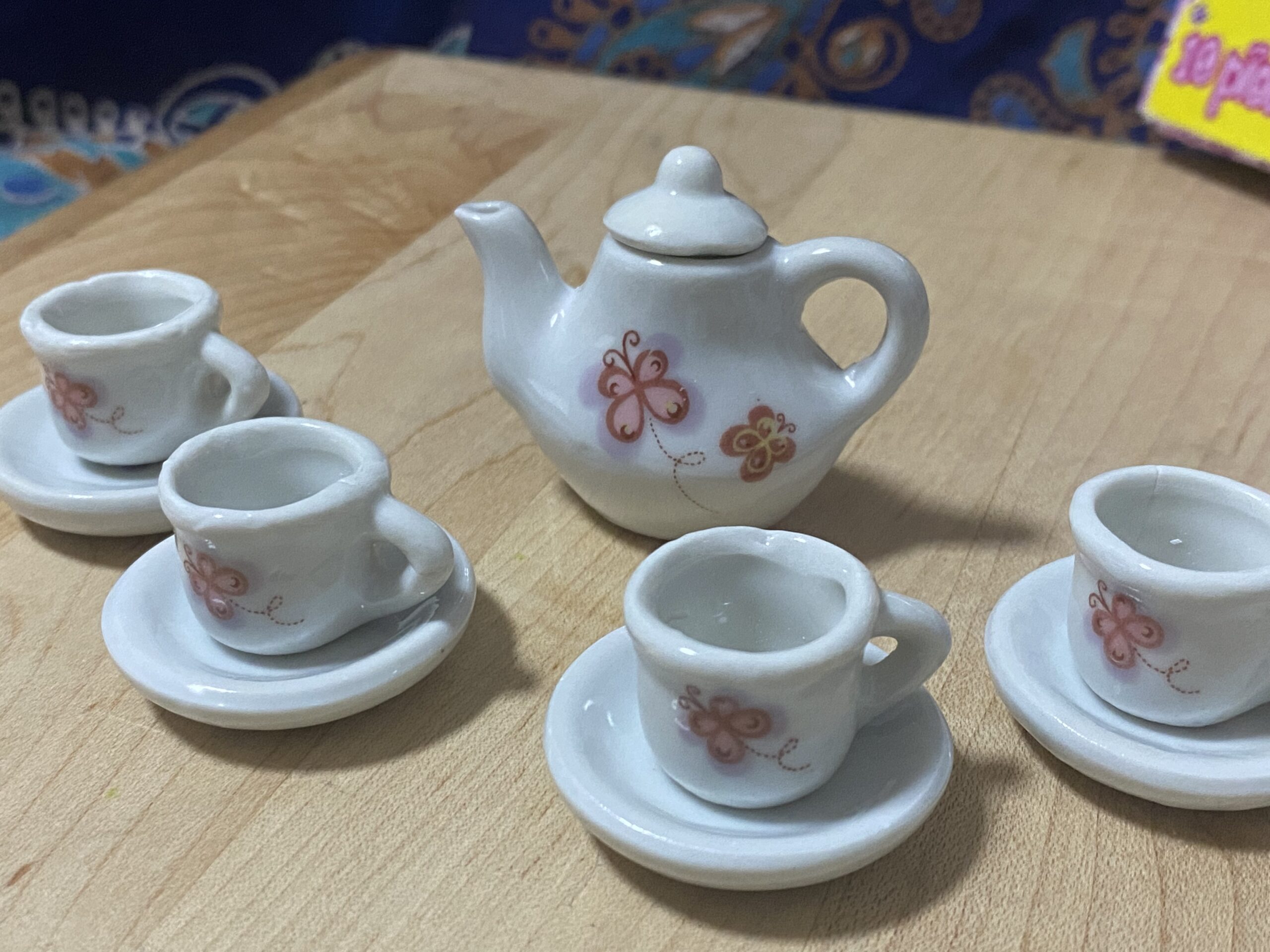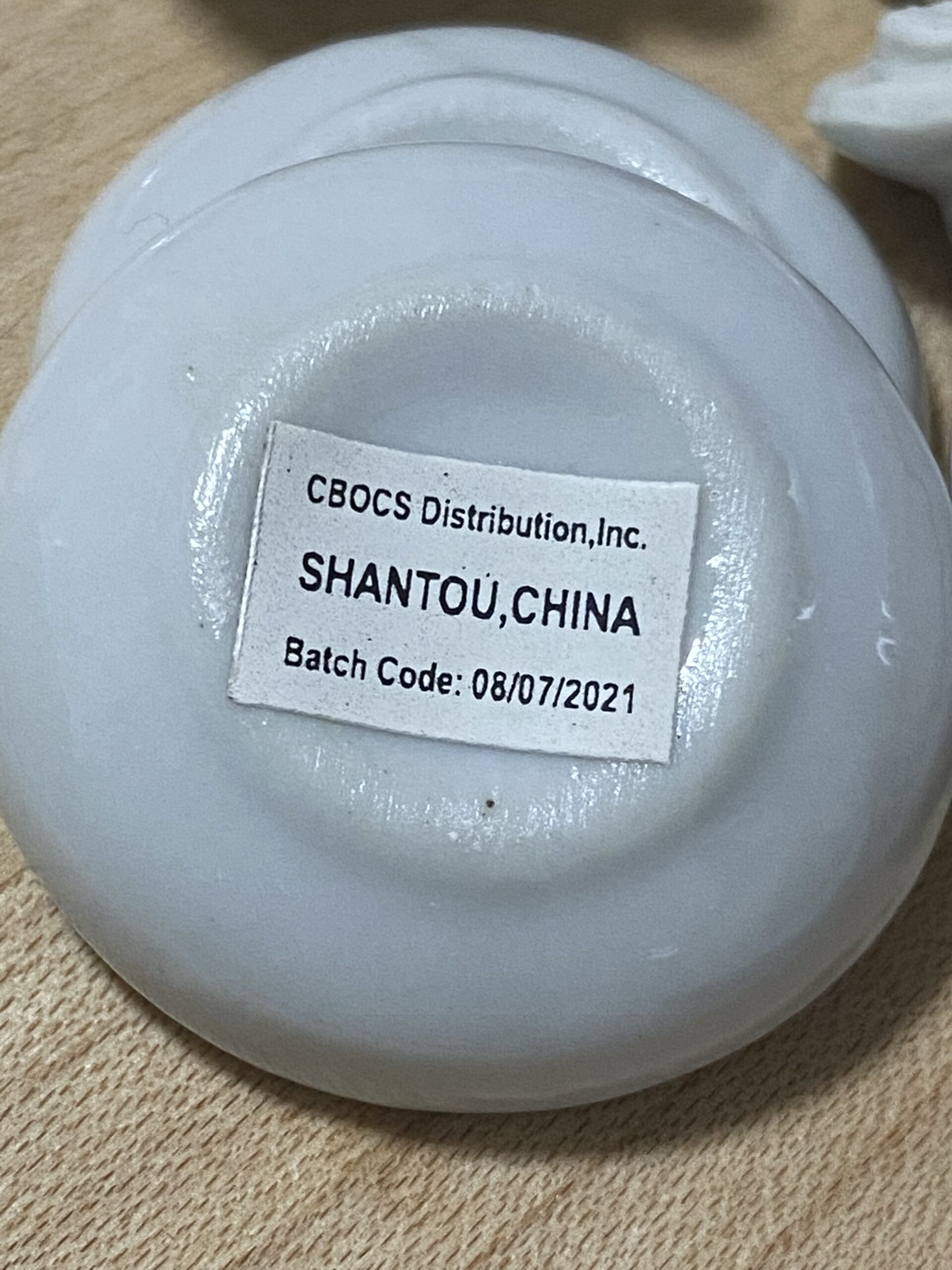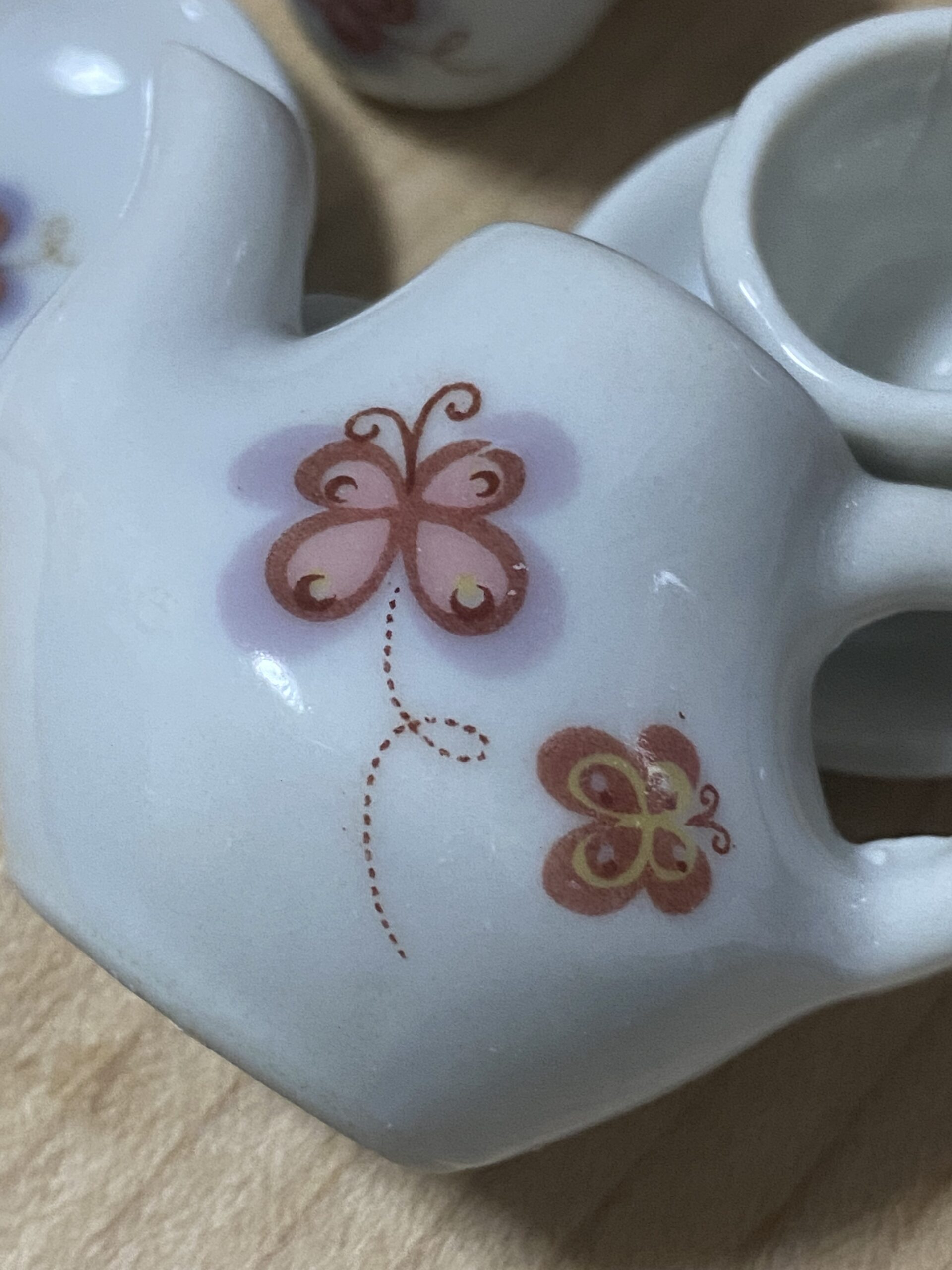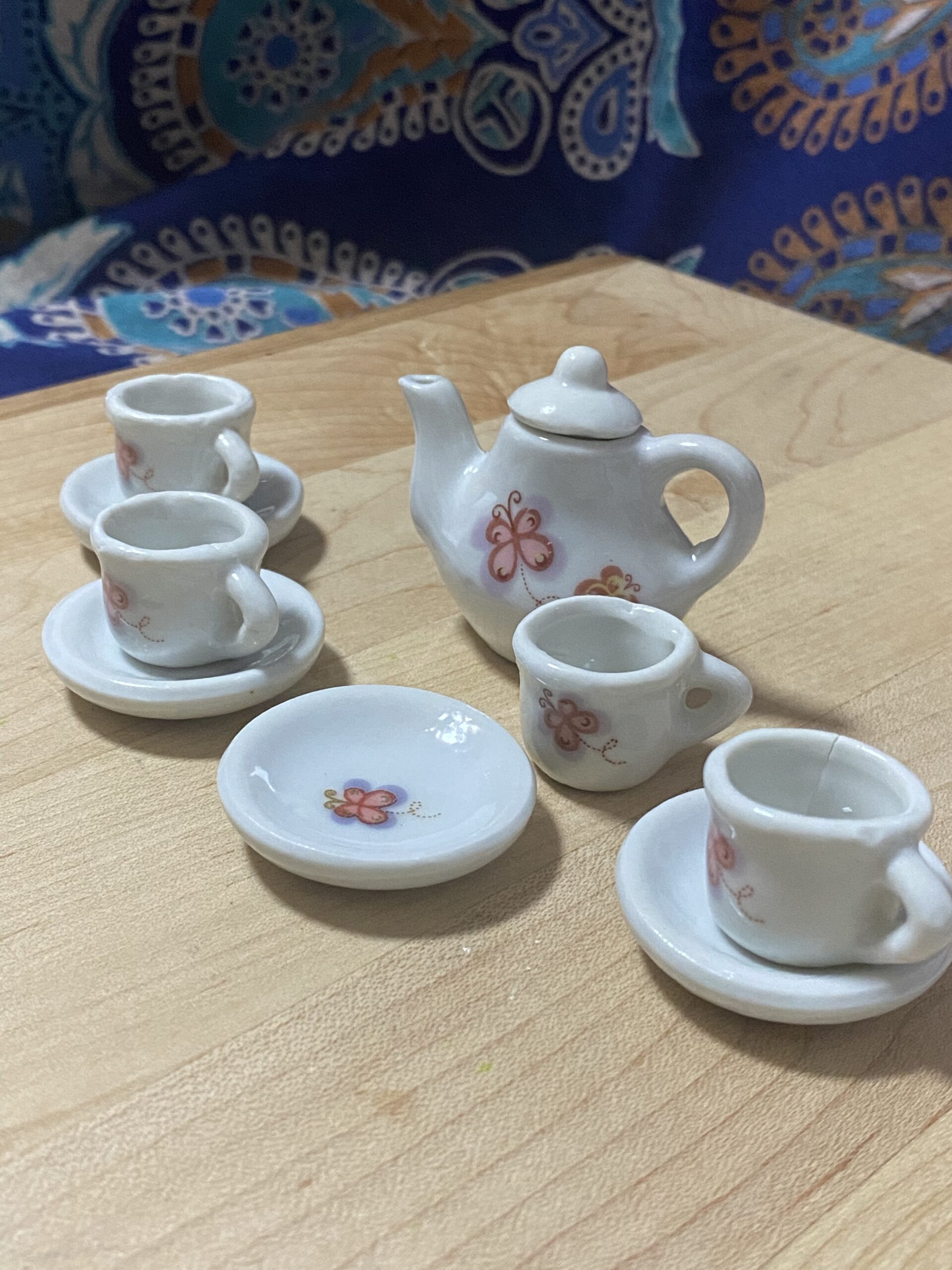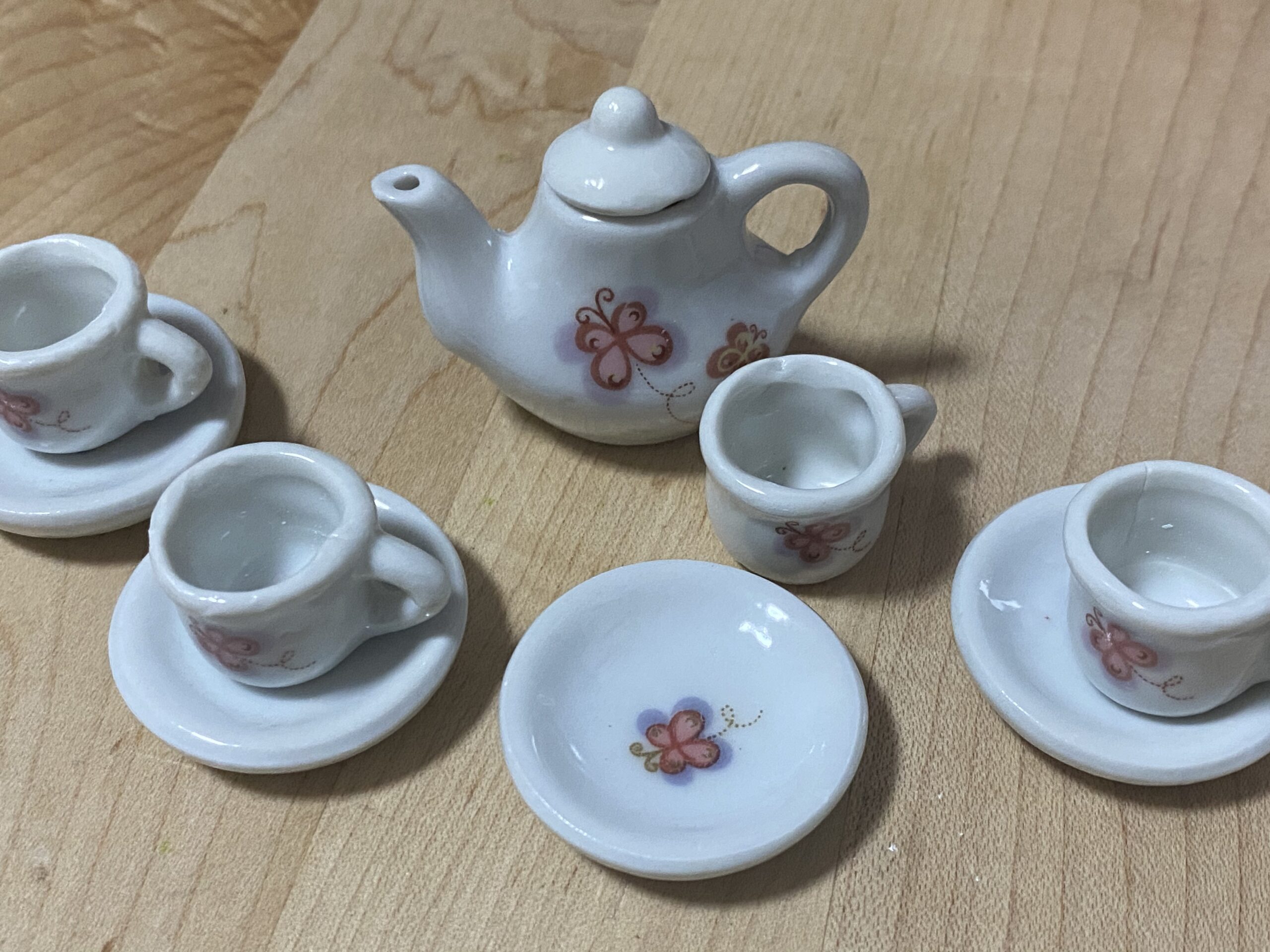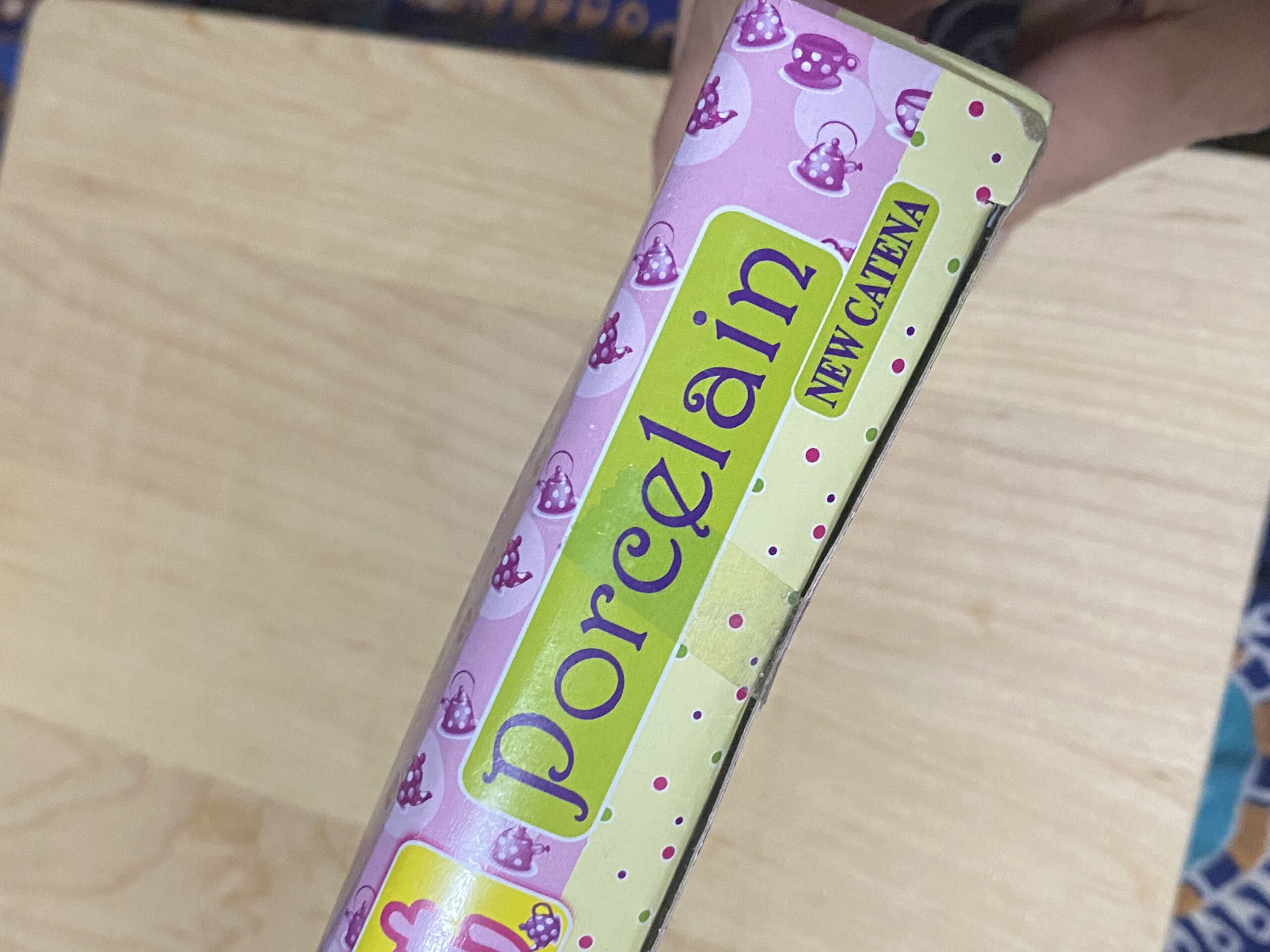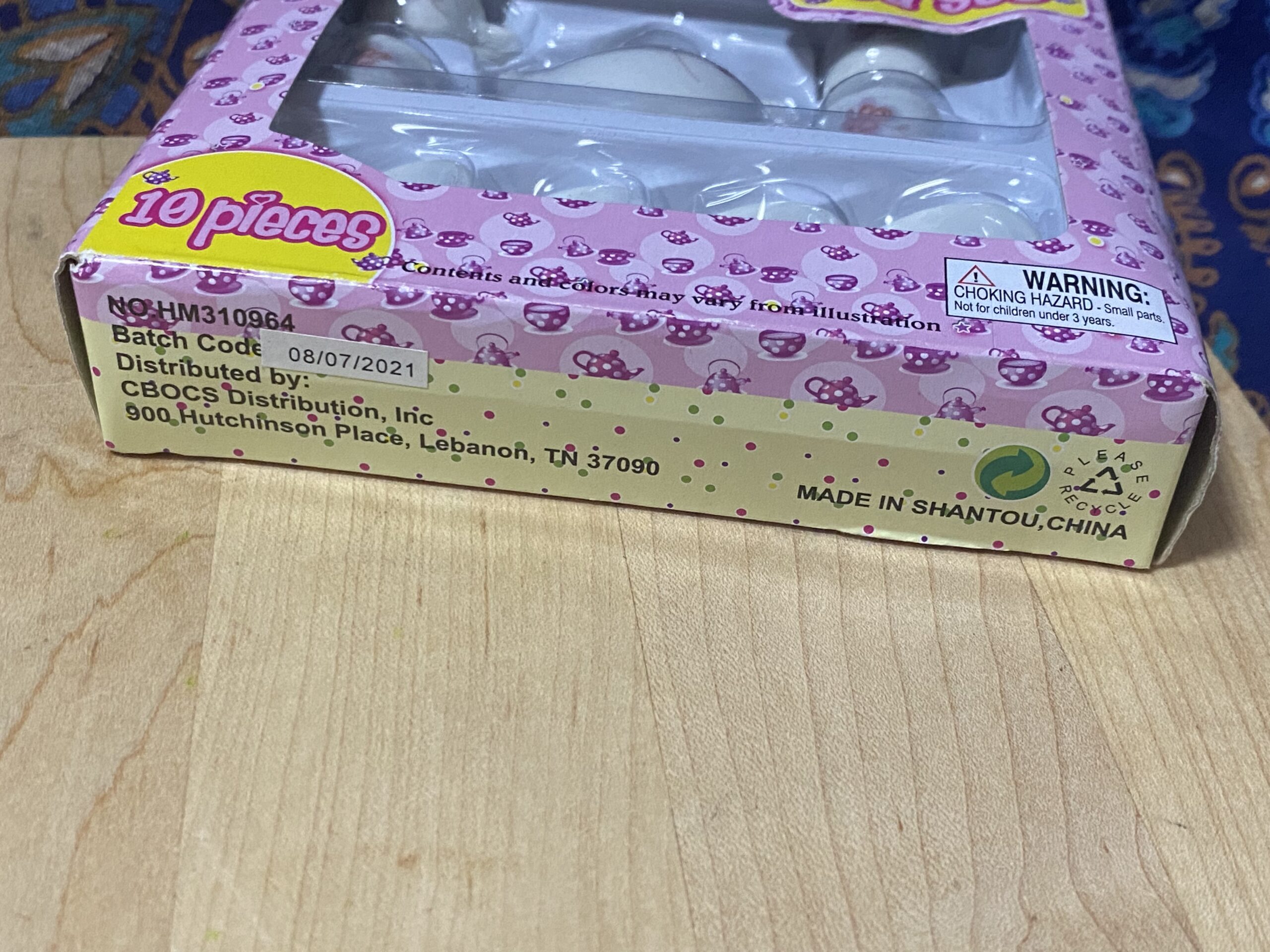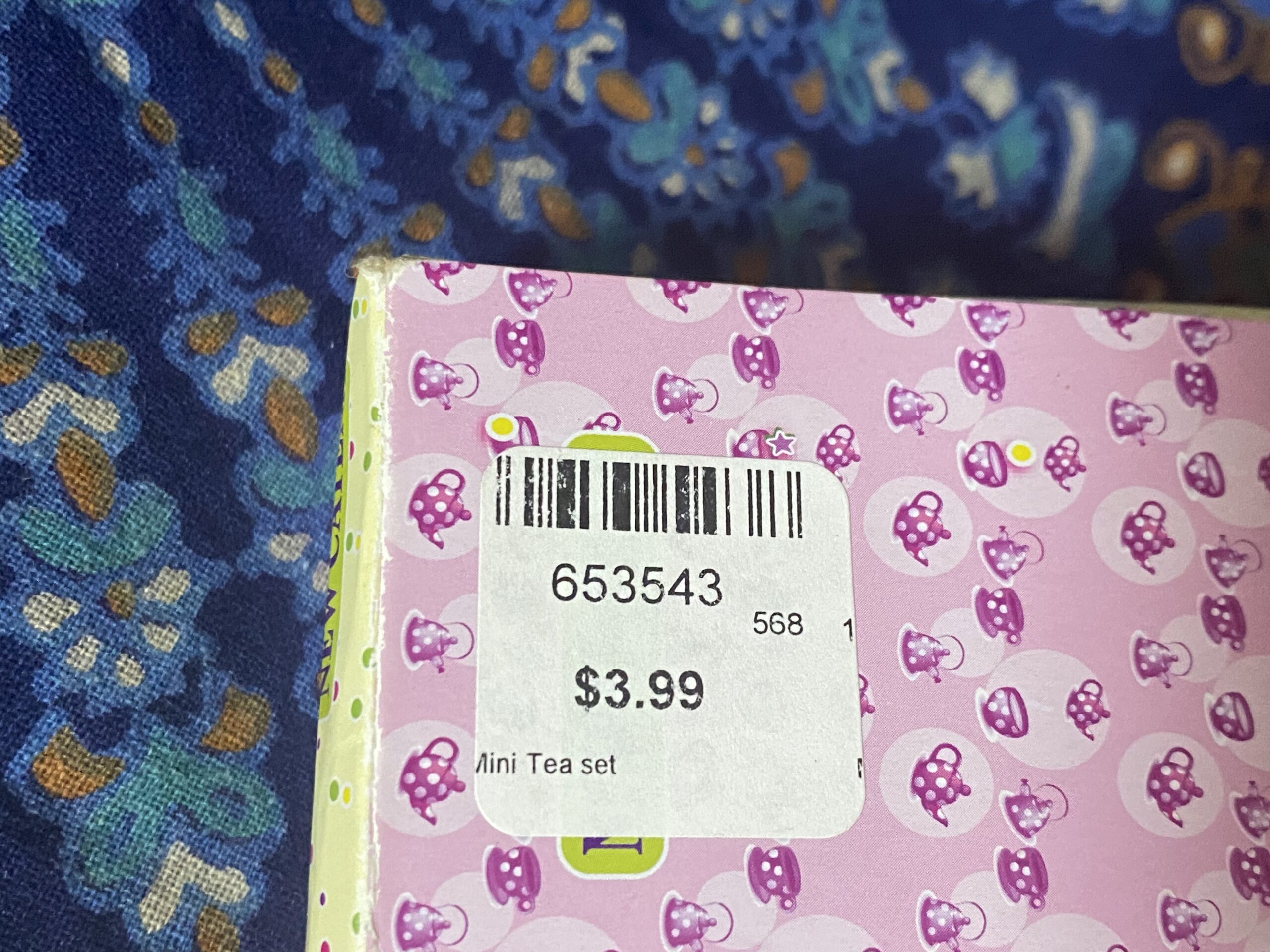XRF test results for porcelain child’s tea set purchased at a Cracker Barrel store in 2022
For those new to the Lead Safe Mama website:
Tamara Rubin is a multiple-federal-award-winning independent advocate for childhood Lead poisoning prevention and consumer goods safety, and a documentary filmmaker. She is also a mother of Lead-poisoned children (two of her four sons were acutely Lead-poisoned in 2005).
- Tamara owns and runs Lead Safe Mama, LLC — a unique community collaborative woman-owned small business for childhood Lead poisoning prevention and consumer goods safety.
- Since July of 2022, the work of Lead Safe Mama, LLC has been responsible for five product recalls (FDA and CPSC).
- All test results reported on this website are science-based, accurate, and replicable.
- Please check out our press page to see some of the amazing coverage of our work so far this year!
Published: Wednesday — October 19, 2022
XRF test results for the porcelain tea set (from Cracker Barrel) are pictured are below.
I was pleasantly surprised with the test results for this item! I have tested so many miniature tea sets that are outrageously high for Lead (here’s a link to one example) — it was great to see that this modern, new, inexpensive option (that most people in the South in the United States can easily purchase in their communities at their local Cracker Barrel) is safe, from a Lead perspective.
The amount of Lead considered safe in a modern item that has been specifically manufactured to be used by children is anything below 90 ppm Lead in the paint, glaze, or coating of the item. Thus, this item definitely meets the strictest regulatory standards for Lead in children’s items (both European and United States’ standards).
What about the Cadmium?
- While the Cadmium level is just a tad high, the presence of Cadmium is not as strictly regulated as the presence of Lead in items made for use by children.
- Specifically, there is no United States Federal standard (currently) limiting total XRF-detectable Cadmium content in children’s items across the board — only a federal standard specific to total content limits for the presence of Cadmium in children’s Jewelry (with limits that are far too high and not protective of children’s health).
- Instead one can look to other (non-U.S./ non-federal) regulatory standards to understand the context and potential risk of the Cadmium levels found:
- the limit in Washington State for total Cadmium content in items intended for use by children is 40 ppm, while
- the limit in the country of Denmark is 75 ppm.
- I am not concerned about the Cadmium level of this particular toy (a range of between 95 and 111 ppm), because the level is relatively fairly low (relative to what it could have potentially been, looking at similar product examples) and the Cadmium-containing element (on the cups and teapot at least) is not on a food-contact surface (if children were to use this with tea — to actually drink tiny sips from!). Separately, with the anticipated use patterns of an item like this, it is also unlikely that the decals will wear with normal use as intended as the tiny colorful butterfly decals appear to have been applied under the clear coat of glaze on the toy (and the clear coat is the part that has tested Lead-free and Cadmium-free in this case).
- You can read more about the general concern for Cadmium in consumer goods here, at this link (Cadmium is a known carcinogen).
Some additional links with information for folks new to this site or wanting a deeper dive on this subject:
- The “Miniature Tea Set” category here on the website — there are just a few posts in this category, but it will be updated as soon as we test more related items.
- This link discusses the testing methodology behind the levels of Lead reported here on the website.
- The “Vintage Toy” category of posts and articles on this site.
- To see more miniatures we have tested and reported on, click here.
- To see some more modern toys with test results here on the website, click here.
Full XRF Test Results for the Miniature Tea Set Pictured
Reading #1) On the butterfly decal on the teapot
60-second reading
- Lead (Pb): 67 +/- 15 ppm (safe by all standards)
- Cadmium (Cd): 103 +/- 8 ppm
- Tin (Sn): 15 +/- 8 ppm
- Mercury (Hg): non-detect
- Selenium (Se): non-detect
- Barium (Ba): non-detect
- Chromium (Cr): 1,191 +/- 316 ppm
- Antimony (Sb): non-detect
- Copper (Cu): 70 +/- 27 ppm
- Zinc (Zn): 78 +/- 17 ppm
- Manganese (Mn): 1,047 +/- 209 ppm
- Zirconium (Zr): 1,989 +/- 48 ppm
- Niobium (Nb): 393 +/- 20 ppm
- Indium (In): 11 +/- 7 ppm
- Iron (Fe): 4,874 +/- 253 ppm
- Platinum (Pt): 78 +/- 35 ppm
- Cobalt (Co): 152 +/- 78 ppm
- Bismuth (Bi): 167 +/- 15 ppm
- No other metals were detected in consumer goods mode.
Reading #2) On the plain white of one dish
60-second reading
- Lead (Pb): non-detect
- Cadmium (Cd): non-detect
- Tin (Sn): non-detect
- Mercury (Hg): non-detect
- Selenium (Se): non-detect
- Barium (Ba): non-detect
- Chromium (Cr): non-detect
- Antimony (Sb): non-detect
- Iron (Fe): 5,278 +/- 250 ppm
- Bismuth (Bi): 126 +/- 10 ppm
- No other metals were detected in consumer goods mode.
Never Miss an Important Article Again!
Join our Email List








